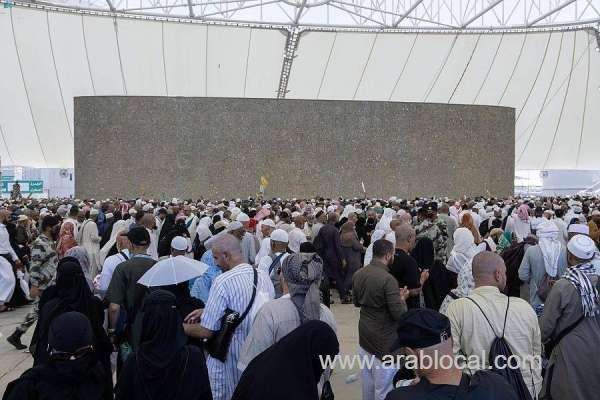Hundreds of thousands of pilgrims have concluded their spiritual journey and commenced their departure from the tent city of Mina. The second day of tashreeq witnessed pilgrims performing the stoning ritual at the three Jamarat, symbolizing Satan. Afterward, they proceeded to the Grand Mosque in Makkah to perform the Tawaf Al-Wida, the farewell tawaf, before embarking on their journeys to the Prophet's Mosque in Madinah or returning home.
In a spiritually elevated state, pilgrims bid Mina farewell, marking the official conclusion of the annual pilgrimage. Let's delve deeper into the seamless departure process and the significance of the Hajj rituals.
Smooth Departure Process and Operational Plan:
The Presidency for the Affairs of the Two Holy Mosques has implemented the second operational plan to ensure a smooth transition for pilgrims heading to the Grand Mosque. This comprehensive plan, in coordination with various service and security sectors, aims to facilitate the farewell circumambulation and provide integrated world-standard services for departing pilgrims at the Grand Mosque.
Elaborate arrangements have been made to avoid congestion at the Jamarat Bridge and ensure the pilgrims' unhindered movement to the Grand Mosque for the Tawaf Al-Wida. The authorities meticulously devised a two-day departure schedule, grouping pilgrims for their transition from Mina to the Grand Mosque on Friday and Saturday.
The Stoning Ritual: Symbolism and Devotion:
During the stoning ritual, pilgrims followed the footsteps of Prophet Ibrahim as they cast seven pebbles each at Jamrat Al-Sugra, Jamrat Al-Wusta, and Jamrat Al-Aqaba. These locations represent the spots where the devil appeared to dissuade Prophet Ibrahim from sacrificing his son, Ismail, upon God's command. The ritual signifies the renunciation of evil in all its forms and a steadfast commitment to resist the machinations and intrigues of Satan.
Seamless Movement and Multilevel Bridge:
The pilgrims experienced hassle-free transitions between the pillars, moving comfortably from one to another as they fulfilled the stoning ritual. Multiple lanes were allocated to ensure the smooth movement of pilgrims within the multilevel Jamarat Bridge complex.
Diverse Pilgrim Population and Travel Logistics:
More than 1.8 million pilgrims from over 150 nationalities, representing the global Muslim community, journeyed from their camps in Mina to the Jamarat Complex according to their scheduled times on Friday afternoon. While some pilgrims reached the Jamarat through the Mashair Train and buses, others staying in tents near the Jamarat made the journey on foot.
After the completion of the stoning ritual, pilgrims returned to their accommodations in Mina, packed their belongings, and boarded buses that transported them to Makkah for the farewell tawaf. Although the official conclusion of Hajj falls on the third day of Tashreeq, pilgrims are granted the flexibility to depart a day earlier.
The Hajj journey, one of the five pillars of Islam, represents a profound spiritual undertaking for pilgrims. As they bid farewell to Mina, pilgrims carry with them a renewed sense of faith, devotion, and a promise to uphold the values learned during this momentous pilgrimage.










